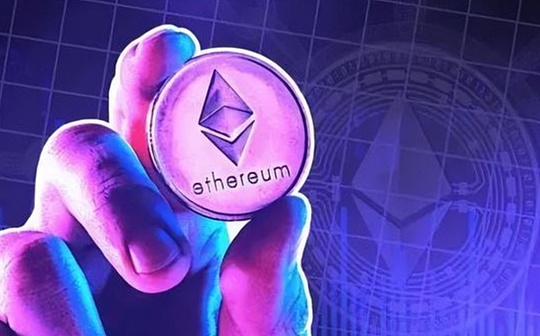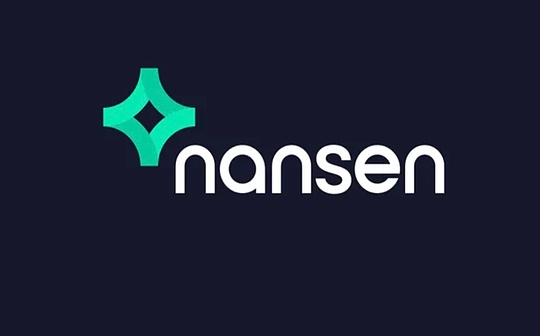How tokenization of US stocks will blow up the huge bubble in the future

転載元: chaincatcher
06/21/2025·14hAuthor: Beta Brother of US Stocks
Equity assets release the chain of "on-chain debt"
You started with $1 million USDC, a compliant stablecoin that is used to buy tokenized TSLAs on on-chain regulated platforms, i.e., digital assets that represent real Tesla stocks (such as TSLA-T).
This token is kept by the securities custodian and is issued on the compliance chain through Coinbase or similar platforms. At this time, your $1 million becomes a "on-chain mirror of real equity."
Next you bridge the TSLA-T across the chain to a high-degree of freedom, non-regulated DeFi chain (such as Arbitrum or Blast), bridge the contract to lock the original token, and release a mapped asset on the target chain, such as wTSLA. At this time, you are holding an on-chain financial asset that is "real equity support" and is accepted as a high-level collateral by the DeFi protocol.
Then, you mortgage wTSLA to a lending agreement (such as Morpho, Silo, Gearbox, etc.) and lend $900,000 of USDT or DAI. These stablecoins can be arbitrarily mobilized and exchanged in the DeFi system.
You exchange the loaned funds for USDC or USDP through Curve or OTC channels, and then withdraw them to your bank account through centralized withdrawal paths (such as Coinbase, Kraken, Silvergate), and become the real-world fiat currency. At this point, you used to withdraw $900,000 of off-chain cash using tokenized TSLA, a "on-chain shell" of real assets. This money is freely used, consumed and investable in the economic sense. You can use it to rebuy Tesla stocks from brokers and enter the off-chain securities system.
After completing off-chain buying, you go on the same process again: tokenize the real stock, generate TSLA-T, and bridge it to wTSLA again, revolving mortgage, borrowing, exchange coins, and withdrawals.
This series of operations essentially packages the originally static equity assets into an on-chain system that can release "stable coin debt", and the released debt becomes available cash in the real world through bridge and liquidation mechanisms.
There is no need to invest new funds in each cycle. The actual assets (Tesla stock) are just "shifted" in your hands, and new cash available amounts are constantly released on the chain. This is what you said in the picture: "As long as Tesla does not fluctuate greatly, my stock will be pledged on the chain, and there will be an additional USD fiat currency outside." - To be precise, it is through high-frequency and low-friction tokenization → lending → cash out cycles, converting static assets into off-chain cash liquidity, releasing nearly equivalent loan funds in each round, and ultimately realizing asset outflow and credit layer amplification.
High-level version of FTT explosion script
In this structure, tokenized stocks do not need to be high-circuit and high attention-oriented stocks like TSLA.
On the contrary, choosing a small-cap stock with poor liquidity and easy to control the market (such as OTC market stocks, Penny Stock or non-mainstream targets under custody of certain compliant securities firms) is a rational choice.
You can control its 10%-30% circulating plate for several million dollars, quietly raise the price off the chain, and then tokenize the stock to mint it into a mapped asset on the chain, bridge it to the DeFi chain, and then use this wSTOCK that you raise the price yourself as collateral to lend a large amount of stablecoins.
Since most on-chain protocols only recognize oracle prices and surface volatility, as long as you pull the off-chain market value and transaction depth - even if it is only a few trading days - the chain will think that this is a "high-quality, high-value" compliant asset, thereby releasing extremely high loanable quotas. TVL continues to grow in this process, because the stablecoins released every time they borrow are injected into a new liquidity pool (LP, market making, re-pled). You can even artificially create a liquidity growth curve, making the protocol, community, and even on-chain data analysis platforms think this is the "blueprint for the next generation of on-chain assets financialization."
You can make a "growth narrative": saying that such assets can connect TradFi and DeFi, and saying that this is part of the RWA wave. Once the market and agreement believe this story, your cashout channel will be opened. After you complete several rounds of cash out and a large number of stocks held off-chain are successfully sold at a high level, you just need to stop supporting the price at a certain node - such as withdrawing the LP or allowing liquidation - the on-chain price of this stock will collapse, the agreement liquidation system will take over, and you have already completed the fiat currency escape.
SBF uses FTT as collateral assets to repeatedly collateral, borrow, buy, and pull the market between FTX and Alameda, forming a completely closed-loop, superficial and risk-free mastiff loop. It's just that he uses a centralized ledger and his own platform, without the illusion of on-chain transparency and decentralization.
What you are talking about now is essentially copying this structure to the chain, using the shell of real securities and the anchoring of regulatory stablecoins to give it "legality", but its core is still mortgage value manipulation + debt cashing out + liquidity transfer + targeted collapse.
This is a high-level version of the FTT explosion script.
About Supervision
Cross-chain is essentially a technical "regulatory escape route". When a user holds regulated assets (such as USDC or tokenized TSLA) on a compliance chain (such as Base, Ethereum mainnet), these assets are subject to clear identity binding, funding source audit, and compliance obligations.
However, once a user bridges these assets to the target chain (such as Arbitrum, Solana, Blast or any L2 chain) through a cross-chain bridge, the original assets are usually frozen in the bridge's lock contract, and then a "wrapped token" is generated on the target chain. This wrapped asset is legally and technically a new on-chain asset, no longer directly controlled by custodians such as Circle or Coinbase, and is no longer directly in the compliance domain.
At this time, no matter how compliant the address on the chain of custody is, as long as the target chain does not perform KYC, the user will immediately enter a free system of identity decoupling. More importantly, the regulatory structure itself is not based on the "asset path", but on the "territory" and "personal". In other words, US regulation can only govern Americans or companies registered in the United States, but cannot govern your operation of an anonymous wallet address in Blast chain, zkSync, or even a DeFi protocol without entity endorsement. Supervision cannot prevent you from using cross-chain protocols such as LayerZero, Wormhole, and Celer, because most of these protocols themselves are decentralized and non-stopable contract sets. They only perform oracle and Merkle proofs, without identifying the user's identity, nor checking the purpose of the bridge.
If you further cross-chain through privacy enhancement technologies (such as Tornado Router, zk-rollup privacy bridge), on-chain behavior will become highly untraceable, and even if the supervision masters your source KYC identity, it will not be able to reconstruct your asset trajectory on the target chain.
Therefore, in the entire on-chain financial system, the cross-chain bridge actually assumes the role of an "asset liberalization center": it does not issue additional funds or provides leverage, but it allows compliant assets to be converted into non-compliant forms, thus entering an unlimited on-chain liquidity cycle.
This is not a simple data transmission, but a stripping process that is bound by compliance. This also explains why even if USDC is a 100% reserve regulatory asset, after it is bridged, wrapped USDC (or any mapping asset) can still participate in a series of non-compliance activities such as leverage, lending, pledge, liquidity mining, etc., and indirectly release the demand and liquidity utilization of USDC ontology. At present, regulators can only freeze the entrance or original custodial assets on the bridge, and cannot recover the mapping coins on the bridge. This constitutes a real arbitrage path that can be cashed out in the real finance → on-chain credit → off-chain cash, and the regulators have no technical sovereignty, no judicial coercive force, and no legislative closed loop of supervision.
Government Intent
I guess first.
First of all, the US government is well aware that under the irreversible trend of global digital finance development, if the US dollar is not "injected on the chain", the reserve anchorage of on-chain assets may shift to Bitcoin, Ethereum and even RMB digital assets in the future.
This has been revealed from Tether's global dominance: the vast majority of USDT's circulation is not in the United States, but in the Middle East, Southeast Asia, and South America, it is the most typical unofficial version of the offshore dollar. If the dominance of the US dollar stablecoins is controlled by the offshore black box system, rather than issued by companies such as Circle and Paxos that are subject to US law, the United States will lose its voice in the future global finance. Therefore, the legalization of companies such as Circle and Coinbase through the "2025 Stablecoin Act" is not a regulatory concession, but a "inclusion" - creating a "on-chain version of Federal Reserve Banknotes" through compliant stablecoins, allowing global users to unknowingly choose the US dollar as on-chain reserve assets.
Secondly, the US capital market is proud of its huge pool of equity and bond underlying assets, and its main exports are not products, but assets and institutional trust.
Today, with the rapid expansion of on-chain finance, the United States allows tokenized TSLA and tokenized T-bill to legally map real financial assets to blockchain, essentially to make global funds "can only mint, borrow, and clear" around US assets, thereby maintaining dominance over financial data and risk pricing systems. Of course, the regulators know that there are leveraged dolls of DeFi on the chain and regulatory holes across the chain, but they allow all this to exist because the US dollar is still the deposit point of all bridges, the end point of all liquidation pairs, and the center of all valuation anchors. Under this structure, the United States controls the "value language" of all chains even if it does not directly control each chain.
In short, the US government does this not because they believe that the chain is safe, nor because they want DeFi to prosper freely, but because it is their only realistic choice to ensure that the US dollar dominates the world on the chain: only by sending the US dollar and US stocks into the chain and making Circle and Coinbase "Citibank of the DeFi world" can they be qualified to sit on the main table of the future financial order.
This is a high-dimensional financial strategic arrangement that allows you to be crazy and bet, but all gambling tables must use US dollar chips and bet on US assets, and settle the Fed route.

 jinse
jinse

